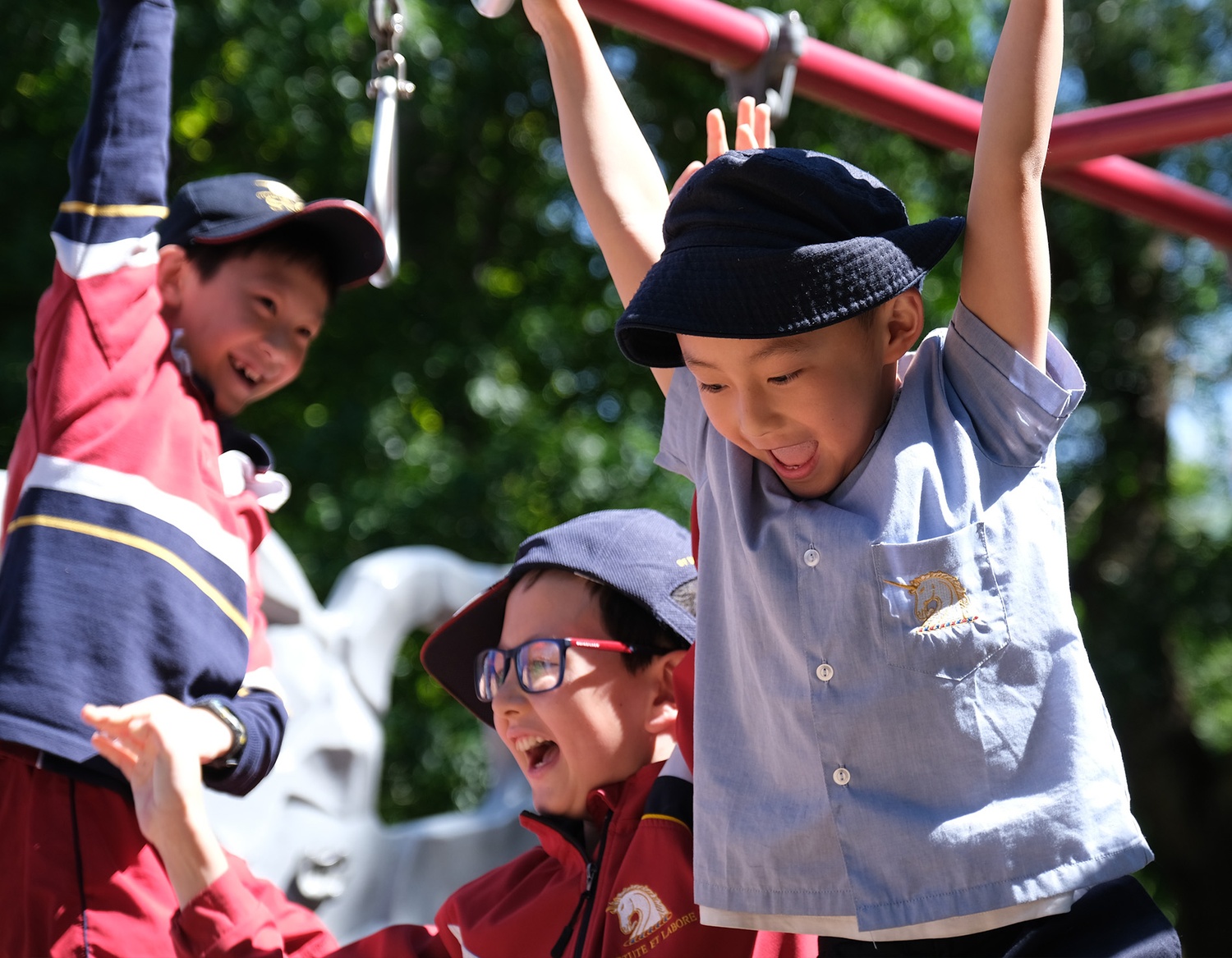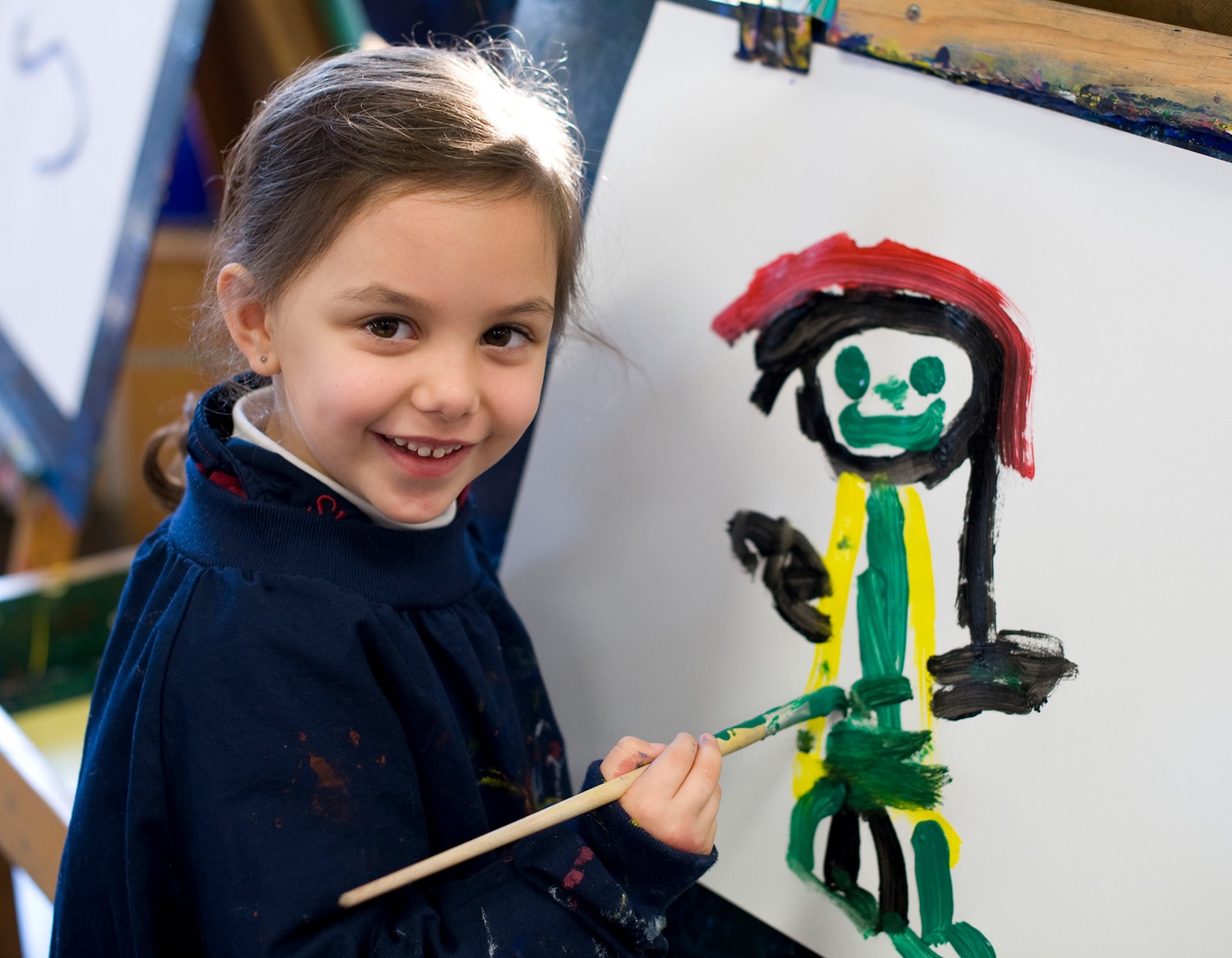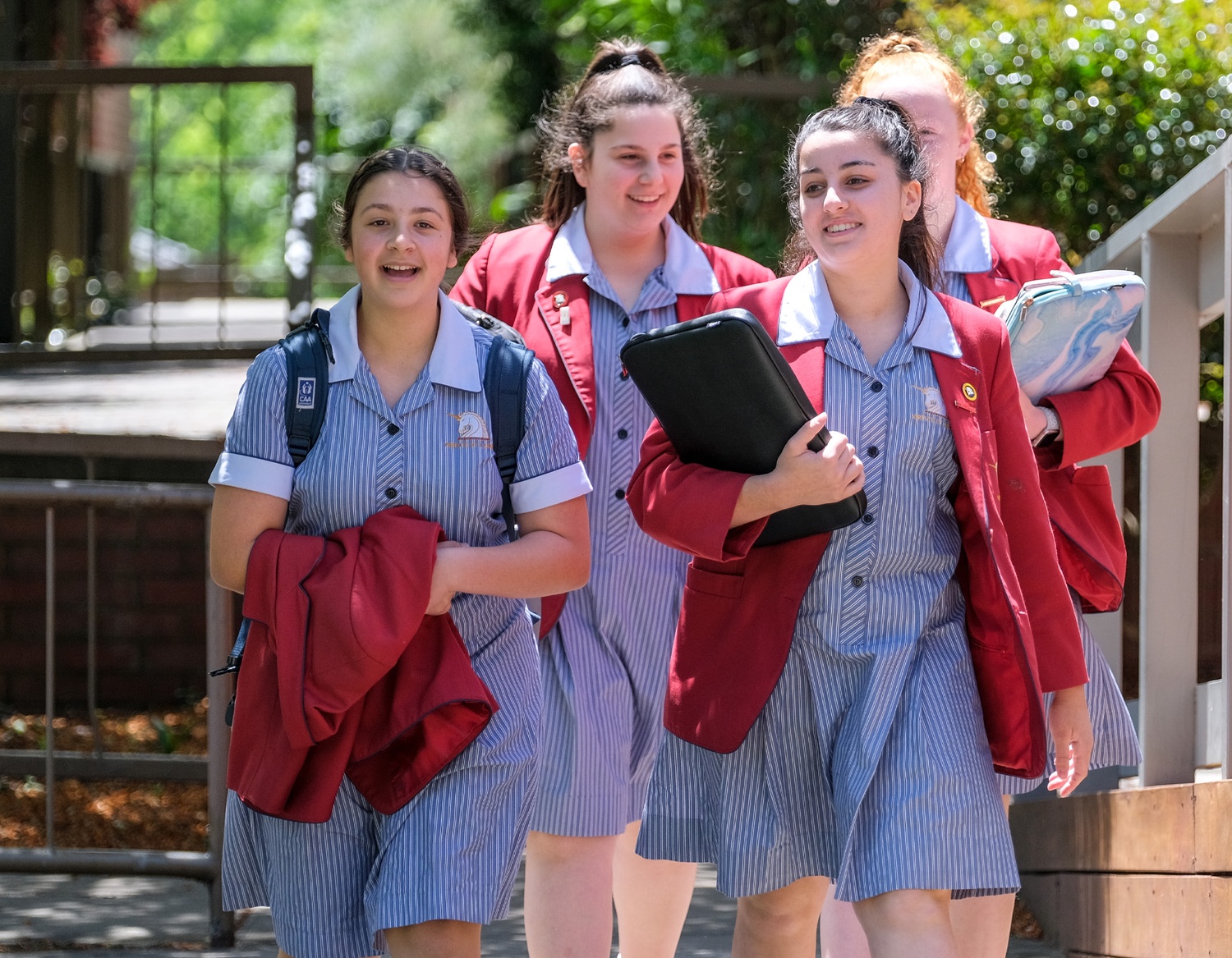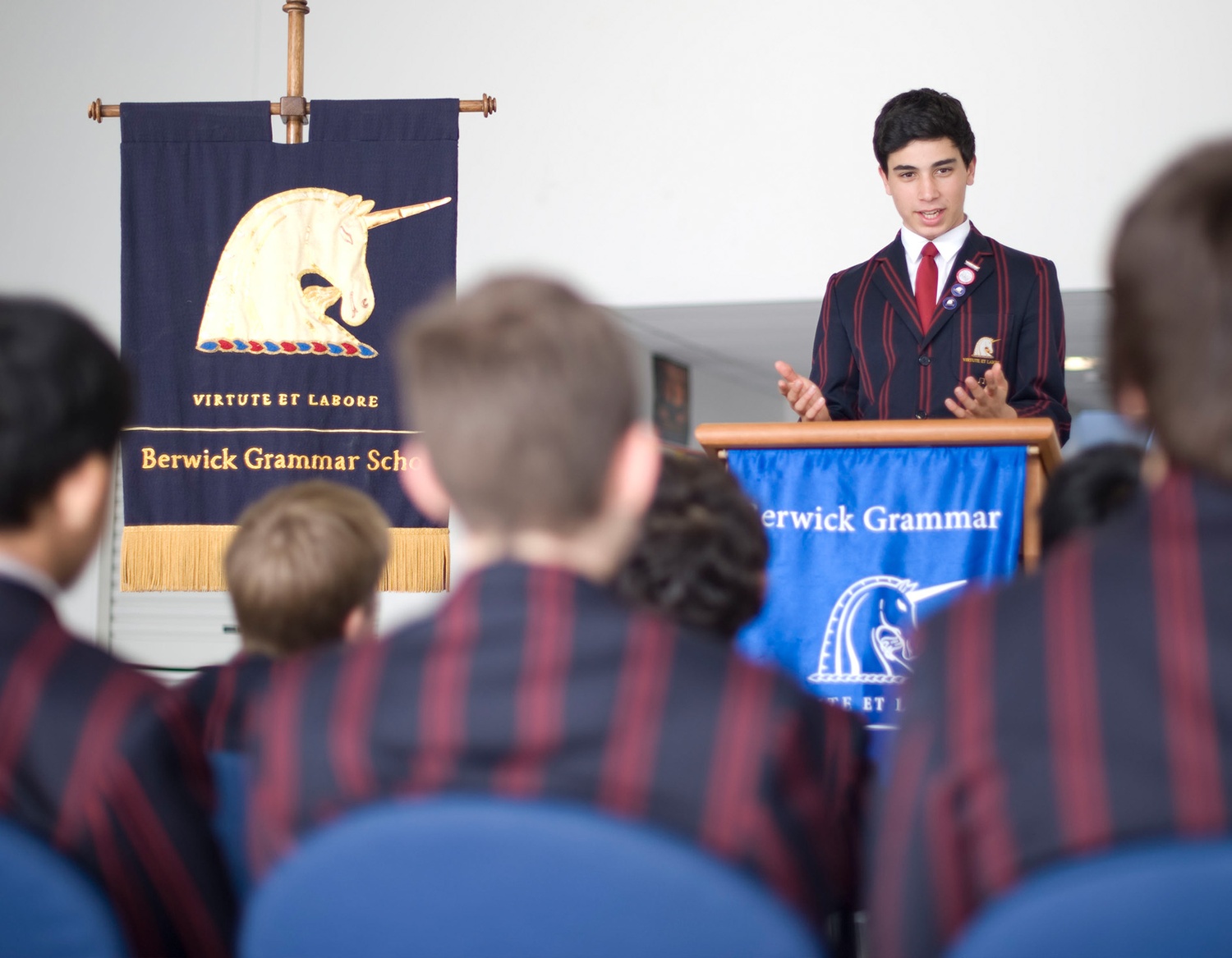Year 9 students have the ability to explore new and exciting subjects that cater to their interests. Four elective subjects will be studied throughout the year.
Many subjects are available at both campuses, whilst others require facilities that are exclusive to the Officer or Berwick campus. Cross-campus bus travel will be available to access subjects where required.
Students will undertake units including:
- painting, drawing, printmaking and digital media
- communication, industrial and environmental design
The course is structured to enable students to undertake future study in either Studio Art or Visual Communication Design through the development of both 2D and 3D works. The practical units require students to apply the design process to develop products that meet the needs of a brief as well as the application of elements and principles of design to structure art works. Students use terminology and techniques appropriate to art and design. Students are introduced to a range of artists and designers and the ways in which works are made in particular cultural and historical contexts.
In the Year 9 Commerce elective, students will examine and investigate the features of successful businesses, through the theoretical and practical aspects of enterprise, economics and legal requirements. Students will explore how successful marketing campaigns allow businesses to prosper (through advertising, product packaging, pricing and effective market segmentation). We will build on these basic concepts to develop an understanding of the positive and negative impacts of the business’ image with regards to environmental and other ethical issues. Students will further explore the Australian Consumer Law Infringements such as bait advertising, subliminal messaging and false scientific claims, as well as the implications of Intellectual Property i.e. trademarks, patents, and copyright. The impact on Demand and Supply of economic factors such as consumer confidence, complimentary and substitute products, supply chain issues and changing prices will also be explored. These learning areas will all be based around the use of real-world case studies which will provide context to content knowledge.
The ‘Computing’ elective provides students with knowledge and skills involved in digital technologies. Students will use the problem-solving methodology and a range of digital technology applications to investigate creative solutions to real world digital scenarios and problems.
This course will introduce students to a range of painting and illustration techniques with a focus on developing skills in a selection of materials. Students will develop artworks based on observation, imagination, personal experiences and artistic influences. The tasks are structured to develop student’s ability to respond to sources of inspiration to create their own personal responses. Students use a visual diary to document and evaluate the development of their ideas and work processes.
This course will introduce students to creative practice in both Textiles and Ceramics. Both units involve the development of a design process that includes the application of art elements and principles to create work.
Students will be introduced to a range of artists and designers from different cultural and historical contexts as inspiration for their work.
Textiles
Students will generate an individual fabric design based on the study of art and design movements that will be professionally printed onto length of fabric. Students will create a garment of accessory using the fabric that they have designed.
Ceramics
Students will complete a range of functional and decorative ware based on contemporary ceramic design including both innovative construction and decoration. Students will work with a range of clay bodies and glazing techniques related to their individual designs.
The Year 9 Dance course invites students to embark on a captivating journey through the world of movement, rhythm, and cultural expression. This engaging course empowers students to explore the diverse facets of dance, nurturing their physical abilities, artistic creativity, and cultural awareness.
Designed to be both physically enriching and intellectually stimulating, this course allows students to delve into various dance styles and genres, while fostering an understanding of dance’s role in personal development and cultural communication.
Key Focus in the Learning:
- Foundations of Dance: Students will acquire a solid foundation in fundamental dance techniques, focusing on aspects such as posture, alignment, balance, and coordination. This physical development forms the basis for exploring more advanced movements.
- Exploration of Dance Styles: Through the exploration of diverse dance styles, including contemporary, hip-hop, ballet, cultural, and improvisational dance, students will broaden their understanding of movement vocabulary and choreographic possibilities.
- Choreography and Composition: Students will have the opportunity to unleash their creativity by crafting their own dance compositions. This process involves selecting movements, structuring sequences, and creating narratives, encouraging artistic expression and critical thinking.
- Cultural and Historical Context: The course integrates the study of dance within historical, cultural, and social contexts. Students will gain insight into the origins, evolution, and significance of various dance styles, fostering an appreciation for cultural diversity.
- Performance Skills: Through regular opportunities to perform individually and in groups, students will enhance their stage presence, confidence, and ability to communicate emotions through movement. Constructive feedback and reflection contribute to their growth as performers.
- Collaborative Projects: Students will engage in collaborative dance projects that emphasize teamwork, communication, and collective creativity. These projects encourage students to work harmoniously to create compelling dance performances.
- Body Awareness and Wellbeing: The course promotes a holistic approach to dance, emphasizing the importance of physical and mental wellbeing. Students will learn about safe dance practices, injury prevention, and the benefits of maintaining a healthy body and mind.
- Assessment and Self-Reflection: A variety of assessment methods, including self-assessment and peer evaluation, encourage students to actively participate in their learning journey, set goals, and continually improve their dance skills.
By the culmination of the Year 9 Dance course, students will have developed not only their physical dance abilities but also their capacity for artistic expression and cultural appreciation. This course provides a steppingstone for further exploration in the realm of dance, offering students a solid platform to grow as skilled dancers, choreographers, and culturally aware individuals.
The Year 9 Drama course offers students an immersive journey into the world of creative expression, theatrical exploration, and artistic development. This dynamic and engaging course encourages students to delve deeper into the realms of drama, honing their acting skills, critical thinking abilities, and collaborative prowess.
Throughout the course, students will embark on a captivating exploration of various dramatic forms, styles, and techniques, gaining a comprehensive understanding of how theatre functions as a powerful tool for communication and storytelling. With an emphasis on both practical and theoretical learning, students will actively participate in activities that nurture their confidence, self-awareness, and interpersonal skills.
Key Highlights:
- Exploration of Dramatic Elements: Students will analyze and experiment with key dramatic elements such as character, plot, setting, and conflict. Through interactive exercises and practical projects, they will develop a nuanced understanding of how these elements contribute to the overall impact of a performance.
- Script Analysis: Engaging with a range of dramatic texts, students will learn to deconstruct scripts, deciphering underlying themes, character motivations, and narrative structures. This skill empowers them to bring authenticity and depth to their own performances.
- Physical and Vocal Expression: Students will delve into physicality and vocal modulation, learning to manipulate their bodies and voices effectively to convey emotions, intentions, and storytelling. This exploration enhances their versatility as performers.
- Collaborative Projects: The course fosters teamwork through collaborative projects that require students to work together in developing, rehearsing, and presenting their own performances. This not only hones their creativity but also instills essential communication and cooperation skills.
- Theatrical History and Context: Students will explore the evolution of drama and theatre, gaining insights into its historical, cultural, and social significance. This broader understanding enriches their interpretation and appreciation of dramatic works.
- Audience Engagement: Through practical activities and reflective discussions, students will consider the role of an audience in shaping the theatrical experience. They’ll learn to adapt their performances to resonate with diverse audiences.
- Assessment and Feedback: Continuous assessment methods, including self-assessment, peer evaluation, and teacher feedback, encourage students to take ownership of their learning journey, set goals, and refine their skills progressively.
By the end of the Year 9 Drama course, students will not only have developed a solid foundation in theatrical techniques but will have also cultivated a deeper appreciation for the arts and the power of creative expression. This course serves as a gateway to further dramatic exploration, paving the way for their continued growth as confident performers and insightful theatre enthusiasts.
Exercise and sport sciences are increasingly becoming a popular industry with many young people expressing an interest in sport therapy, training, nutrition, coaching and psychology. In this practical subject, students will be engaged in a variety of physical, health and sporting challenges designed to teach them about what it takes to become an elite sportsperson.
The Year 9 Food for Vitality course aims to introduce and build sound knowledge of key foods groups in greater depth than the Year 7 and 8 program. There is a large practical component refining the students’ management and culinary skills related to food preparation. There is also an opportunity for students to design and create their own dishes. The course works towards enhances the students’ knowledge of current food trends and the chemical and functional properties of ingredients that can stimulate health and vitality. Some of the topics covered look at brain and super foods, looking at the connection between food for mental well-being and being able to substitute ingredients for different dietary considerations or just to modify a recipe.
Food for Vitality provides students the opportunity to look at the food industry and plan and prepare well-balanced meals, super snacks and understand strategies to enhance good health and performance.
Course content includes:
Food Hygiene and Safety
Properties of ingredients and their function in food
Cooking methods
Nutrition and catering for dietary requirements
Soups
Gourmet Salads
Bread Making
Design Tasks – Students own recipes
Healthy Snacking
Meal Planning
Desserts
Food Trends
Designing meals meeting a design brief
The World on a Plate builds on culinary skills and an awareness of the relationship between the fusion of nationalities and cultures that have created the Australian cuisine. Students look at international food trends and cultural influences on diet and cook for special events and occasions. The course aims to extend the range of food experiences using a broad range of materials and technology in food preparation. A large component of the course enables the students to develop production skills, express their creativity and design dishes around cultural elements. The overall main focus is enjoyment in cookery and encourage imagination, creativity and confidence in a practical setting.
Course content includes:
Food Hygiene and Safety
Meal Planning and looking at components of a menu
Adapting and designing recipes
Multicultural Design Tasks – Students own recipes
International Food Trends
Traditional cultural signature dishes that have impacted Australian Cuisine
Desserts and Patisserie Cookery
Forensic Science is a field that continues to rise in popularity, with enrolments in Forensic Science tertiary courses in Queensland rising by 70% between 2012 and 2016, and a 30% rise in criminology enrolments (Bevas, 2016). Anecdotally, this popularity remains present today and is reflected within our own school community.
Key learning outcomes of this subject:
- Construct hypotheses based on models and theories
- Analyse patterns and trends in observations and data
- Identify alternative explanations that are consistent with the evidence
- Explain how advances in science can affect people’s lives, including generating new career opportunities
- Describe the role of DNA as the distinctive blueprint of humans
- Recall that genetic information is passed to offspring from both parents
- Investigate the impact of developments in genetic knowledge
- Outline how computers have made possible the analysis of DNA sequencing
- Outline how temperature and other factors affect the rate of chemical reactions
- Describe how the motion of objects can be predicted using the laws of physics
- Analyse motion produced by forces
The subject will consist of three main units over the course of one semester:
- Crime Scene
Concepts: first personnel to arrive, types of physical evidence, types of trace evidence
Practical Investigations:
– Lifting fingerprints
– Analysis of fibres
– Predicting a suspect’s height
– Blood spatter analysis
– Determining fatality from wounds (can be structured as an assessment task) - Victims and Suspects
Concepts: Identifying victims, identifying skeletons, cause of death, identifying suspects, proving the suspect was present
Practical investigations:
– Measuring the body
– Identikit
– Gel electrophoresis (can be structured as an assessment task) - Fakes and Extortion
Content: False identities, fake documents and extortion
Practical Investigations:
– Reading a burnt note
– Chromatography
– Smartie colours
The subject will incorporate various case studies as opportunities for students to apply their learning, and may entail industry guest speakers visiting the class to provide further information about their work and reinforce links made in class to real-world applications.
The subject will be assessed through a combination of practical tasks, summative tests and/or applying their knowledge in an inquiry-based case study project.
Are you passionate about sports and curious about the incredible power of the human mind? Get ready to undertake an exciting unit that combines the thrill of athletic performance with the fascinating world of psychology. Welcome to a subject that not only enhances your physical skills but also introduces you to the captivating realm of sports psychology.
Throughout this experience, you’ll dive into the psychology behind legendary athletes’ exceptional feats. Discover the mental strategies that catapult them to the top, from cultivating unbreakable self-confidence to silencing those pre-game jitters. But that’s not all – this subject will also introduce you to psychology as a subject area in its own right. You’ll explore the science behind motivation, delve into the mysteries of concentration and attention control, and learn how to effectively communicate and collaborate with your team. From understanding the impact of colors on perception to unveiling the influence of social media on athletes’ well-being, this course is the ultimate combination and introduction to the worlds of both sports and psychology. If you’re excited about achieving peak athletic performance while unravelling the secrets of the human mind, join us for an unforgettable adventure in sports psychology!
Students will be introduced to the world of Horticulture. They will be given a basic knowledge of tools and equipment used to improve plant growth and reproduction. This will include the safe use of tools, soil, fertilizers and other mediums used in the growing process. Students will gain an understanding of soil formation, composition, fertility and methods of propagation, plant physiology and different growing mediums.
Assessment of this Unit will be both practical and theoretical with practical aspects assessed on the students ability to complete a range of tasks. Examples of tasks that could be undertaken are;
- Growing a herb using using different growing mediums.
- Identifying the common uses of herbs in cooking, medicine and cosmetics
- Keeping a diary to record techniques used, growth rate, soil ph levels etc.
Group work will play an important role in most aspects of the course and the overriding aim is to encourage an ongoing interest in horticulture.
In this subject, students develop skills in using a variety of media forms to create and share stories for audiences. Students think critically about all forms of media and examine bias, representation and the role of selection in a range of media forms. This course will also include practical elements to introduce students to the fundamental concepts of both digital and analogue photography. Students learn how to use a digital SLR and traditional film SLR Camera. They will learn how to work in the darkroom and on the computer to create photographic images. A problem-solving challenge in relation to composing and sourcing images is undertaken, using both natural and studio lighting.
Students interested in media industries such as journalism, filmmaking, publishing and photojournalism should consider studying Media & Photography in Year 9
The Year 9 Music course offers students a dynamic and immersive exploration of the world of sound, melody, and cultural musical traditions, closely aligned with the Victorian Curriculum standards. This enriching course empowers students to cultivate their musical talents, embrace diverse musical genres, and develop a comprehensive understanding of music’s role in personal expression and cultural connection.
Structured to nurture both practical and theoretical skills, this course encourages students to engage with various musical elements, fostering creativity, critical thinking, and an appreciation for the rich tapestry of global musical heritage.
Key Highlights:
- Foundations of Music Theory: Students will develop a solid foundation in music theory, including concepts such as rhythm, pitch, harmony, and notation. This theoretical grounding provides the basis for understanding and creating music.
- Exploration of Musical Genres: Through the exploration of diverse musical genres, spanning classical, contemporary, world, and popular music, students will broaden their musical horizons and develop an eclectic taste in sound.
- Instrumental and Vocal Techniques: Students will have the opportunity to engage with various musical instruments and vocal techniques, refining their skills and enhancing their ability to convey emotions and messages through sound.
- Composition and Arrangement: The course encourages students to unleash their creativity by composing and arranging their own musical pieces. Students will learn to manipulate musical elements to craft compositions that reflect their artistic vision.
- Cultural Musical Traditions: By studying the musical traditions of different cultures, students will gain insight into the ways music reflects cultural identity, history, and social contexts. This exploration fosters cultural appreciation and empathy.
- Music Technology: The course introduces students to music technology, allowing them to explore digital composition tools and recording techniques. This modern approach to music creation aligns with contemporary music practices.
- Performance Skills: Regular performance opportunities, both individually and collaboratively, enable students to develop their stage presence, confidence, and ability to communicate through music. Constructive feedback supports their growth as performers.
- Reflective Practice: Students will engage in self-assessment and peer evaluation, fostering metacognition and encouraging active participation in their musical development.
- Historical and Contextual Understanding: The course integrates the study of music within historical and cultural contexts, providing students with a holistic understanding of music’s evolution and impact on society.
By the culmination of the Year 9 Music course, students will have cultivated their musical talents, gained an appreciation for diverse musical genres, and deepened their understanding of music’s cultural significance. This course sets the stage for continued musical exploration, equipping students to further develop their skills as accomplished musicians, composers, and culturally aware individuals.
This elective is designed to be a lead in to studying Philosophy. It will focus on ethical concepts in Philosophy relating to the nature of right and wrong by investigating ethical questions raised in superhero texts. The course will involve watching superhero movies/tv shows and reading comic book texts and discussing ethical decisions made by the characters. Students will need to evaluate the actions taken by characters and pass judgement on the morality of their decision making.
Through the production of a timber and plastic remote-controlled vehicle, students investigate contemporary design practices and methods for mass-manufacture including CNC routing and vacuum-forming. Focus is placed on the analysis, modification and improvement of a product design with consideration of sustainability. Students learn about the design process and use this to plan, build and evaluate a product.
Students work independently and collaboratively in teams focusing on working towards a brief. Students apply knowledge, skills, techniques and processes, including risk management. To ensure consistency throughout production, the team refers to the historical or contemporary cultural design movement or style that inspired their designs.




